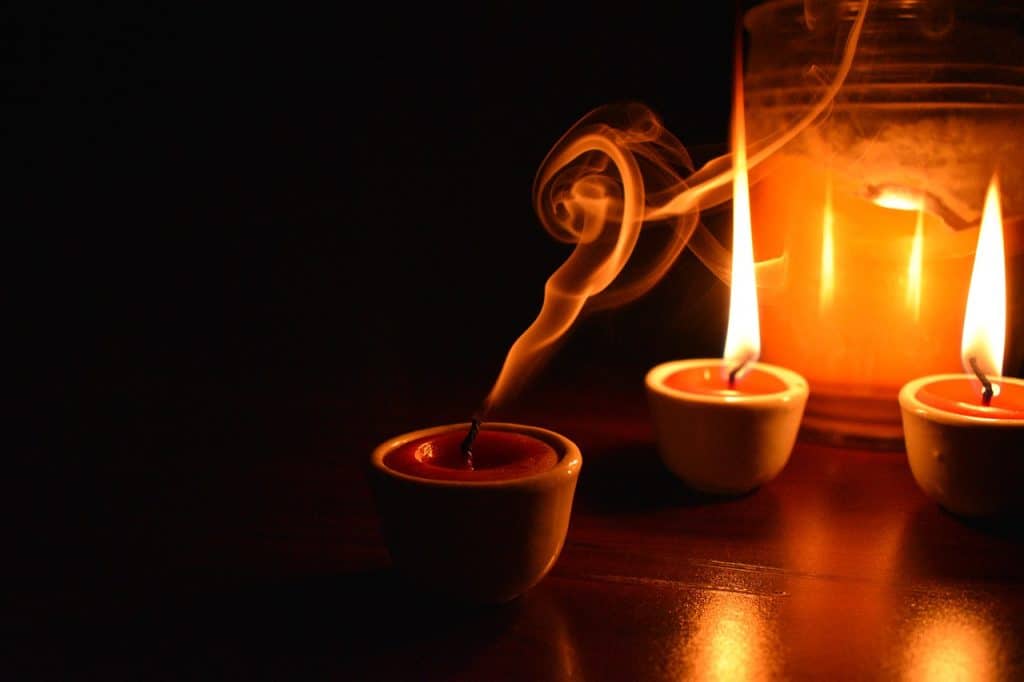When you think of setting the mood in your personal space one of the first things you think of is lighting a candle. It could be as simple as tea lights or novelty decorative candles. Regardless of size, they mostly have the same benefits of increasing focus, reducing stress and creating ambience, amongst other things. The effects we don’t think about (or most of us don’t know about) is the toxic effects of candles.
Lead and other toxic agents
There have been concerns about emissions from burning candles over the years and its impact on the air we breathe. It was popular prior to the 1970s to have lead in candle wicks and despite a voluntary ban, lead has still been found in some candles manufactured more recently. Inhaling from this wick can lead to lead poisoning and cause behavioral and growth problems in children. Today there are still particulate matter and volatile organic compounds (VOCs) released from candles but the amounts are too small to cause major health problems. However, you can still get allergic reactions if you have any pre-existing allergies and asthmatic reactions if you have pre-existing respiratory conditions.
Wax bases and clean burning
The main culprit making candles toxic is the use of paraffin wax; a petroleum derivative. Paraffin is one of the cheapest wax options so is convenient for most manufacturers. Ongoing concerns are the soot and fumes which are generated more from paraffin wax with synthetic fragrance oils but also from any other candle with a too long wick. To be on the safe side, you can choose to practice burning candles safely: only for about 4 hours at a time, trimming the wick and only extinguishing the flame with the wax to reduce smoke releasing soot. You can also choose healthy candle options that use alternative wax or wick materials.
The theme here is natural, sustainable and by extension, biodegradable: beeswax, soy wax and other 100% vegetable-based wax candles are the healthiest alternatives to paraffin. Not only do they burn slower and more evenly – lasting longer, they release fragrance better which is great for your space. Most healthy candles are now made from soy wax or coconut wax because of their ability to carry fragrance well. And you can find blends of these waxes for enhanced properties.
Essentials oils over synthetics
Some synthetic fragrance oils have been known to induce headaches and release toxic compounds. And these synthetic fragrances are frequently paired with paraffin wax candles. With the use of beeswax and plant-based waxes, essential oils are best used to add scents which are more natural and safer. There are lots of physical benefits of essential oils and candle makers take advantage of this. These two ingredients combined is less harmful and have added benefits for the skin.
Zero heavy metals in natural wicks
Wicks are another potential source of toxins. Even though lead containing wicks are no longer popular, some wicks have metal wires in them and burning releases heavy metals into the air for us to inhale. There are natural wick alternatives: cotton wicks that are 100% cotton, wood and even hemp are used sustainably.

Spotting a healthy candle
These are the three main things to look out for in healthy candles wherever you choose to source them from. It would be hard to identify if these candles are actually healthy by sight only, but you can tell be using your senses of smell, sight and touch. Natural fragrances you can identify from nature are more likely to be natural than say ‘bubble gum’ scented candles, which is most likely synthetic. Beeswax tend to be yellow naturally, soy wax, a duller white than paraffin wax. This may not be the best way to check especially if the wax used is a blend or colourings have been used. As for touch, most candle makers still coat their wicks with paraffin so it’s easy to ignite and burns bright. You can feel for the coating on the wick, if there is one it is worth having another look at the ingredients list or make an enquiry. Candle-enthusiasts would tell you waxes all feel different, but till you get to that level you can do what the rest of us do: read.
Read up on the brand you choose to purchase, more candle makers are letting you know what is in their product either on their label or online. If there is anything you cannot pronounce or you might be allergic to, you can take a hard pass and keep looking for the candle that would be safe for you and your home.
Seven brands of healthy candles
We did say we read up on healthy candles. So, we are sharing some of our research and the most common candles that come up often are from these following brands:
Goop. There is hardly a soul who has not heard of Goop and the more interesting candle names they have. Goop is a lifestyle brand owned by Gwyneth Paltrow which trades in beauty, wellness and women’s health. They pride themselves in how natural their candles are, and their natural ingredient list is paragraphs long.
Heretic. Partner in crime with Goop for the most famous candle in the world. And more importantly a standalone fragrance company that utilizes only natural ingredients for rich fragrances that they make cool. Their head turning names are only more interesting than their laundry list of candle ingredients.
Follain. This beauty brand launched after a quest for products free of toxins showed a gap in the market. This commitment to toxin free products was extended to 2 candle products: No 1 and No 2 which have natural ingredients with soy-coconut base wax blends, cotton wick and exciting scent combinations.
Shiva Rose. Actress and blogger who created a self-named toxic free beauty line. They have just one candle that pops up on most candle lists, handmade with coconut wax and boasts all-natural ingredients that have skin enhancing properties and lead-free cotton wick.
Uma. Botanical loving, beauty and wellness luxury brand and luxury supplier. Their ingredients are sourced from India, grown sustainably on their estate. This care and devotion extend to their candle that promotes soothing relaxation.
Lite + Cycle. This candle brand is minimalist not only in packaging but in its mission of simple uncomplicated candles. They are transparent in their ingredients and offer mostly single scented candles. They proudly use essential oils, soy wax and unbleached cotton wicks.
P.F. Candle Co. A fragrance company based in Los Angeles championing vegan, cruelty free and phthalate free products. Their candles are made of soy wax with cotton core wicks and promises strong pleasant smells from fragrance oils.
The list in not exhaustive, for as many unbranded candles on the market, there are healthy branded options with traceable ingredients. So even if you find something you are unsure of, you can find a similar scent for any budget fitting your need. To round off the healthy candle options you would find most of these candles are in durable, reusable containers. That makes them not only healthy for us but the environment. You are protecting yourself and the earth.




